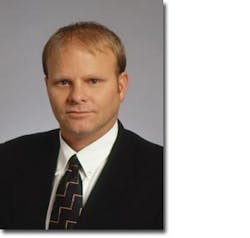DFW AIRPORT — It’s been 14 years since the FAA and DFW International Airport teamed up to create the Department of Public Safety Fire Rescue Training Academy here. Originally intended to serve Texas and adjoining states, it has attracted airports from South America to China. In recent years the department has placed an emphasis on beefing up equipment and personnel. Running in tandem with the DFW marketing department’s international push, particularly in South and Latin America, the fire group is seeking to make its imprint on ARFF training globally.
According to Alan Black, vice president and former fire chief, some 20 years ago DFW explored moving to a propane-based training system, which it subsequently did. That research led them to approach FAA about a regional facility.
Says Black, “The feds embraced the idea. FAA put up $6 million; DFW put up $6 million. The idea was we would become a regional training center so that other airport firefighters in our region could come and use the facility. We just recover our costs.
“Our emphasis from the very beginning was to train our firefighters. We had about 100 firefighters at the time; we have about 175 now just because of growth.”
The regional facility originally targeted Texas and neighboring states Arkansas, Oklahoma, and Louisiana. But Black says a shortage of ARFF-dedicated facilities led to DFW reaching out nationally. Now, it’s global.
“Four or five years ago we started marketing more internationally, primarily to Latin and South America. We’ve had firefighters train here from Greece, Jamaica, Argentina, Chile, Spain,” says Black.
DFW has upgraded its ARFF fleet with Oshkosh Strikers — 4,500-pound, eight-wheel drive units; two have penetrating snozzles. Thermal imaging has been incorporated, and officials are currently working with the manufacturer of Pyrolance for cargo response. “We’re actually testing it and looking at it for cargo. We are able to go through one side and out the other with water,” explains Black. “The manufacturer is actually trying to market it for structural purposes, and we saw an application for cargo.”
The DFW Department of Public Safety Fire Rescue Training Academy offers a wide array of ARFF-related courses, and generally keeps class size below 25, says fire chief Brian McKinney.
He and Black emphasize that the department has continued to focus both on new ARFF equipment and new aircraft technologies, notably the Airbus A-380 and the upcoming and composite-heavy Boeing 787. Says McKinney, “Composites are a bit harder to fight. What the composite actually does is it melts. You don’t have the real hot fires that you have with aluminum when it heats up. It’s lighter weight, so piercing through it should be easier.”
Adds Black, “There are two schools of thought; I could argue either way. Some say the composites have a longer burn-through time than the aluminum. The other thing is, if there is a fire of that magnitude, once you get the other components inside the fuselage burning, like seats and carpet, it’s giving off hydrogen cyanide and other toxic gases anyway. It’s kind of, would you like to be shot with a shotgun or a .22?”
DFW is prepared for the A-380, says Black. It replaced two triage trailers which could handle 150 patients. The airport used grant money to buy stand-alone vehicle with a capacity of treating 350.
“We live, eat, and breathe airport firefighting,” comments Black. “We don’t pretend to be the premier structural firefighting department in the United States. We do believe we are the premier aircraft rescue firefighting department in the world. We are that.”






